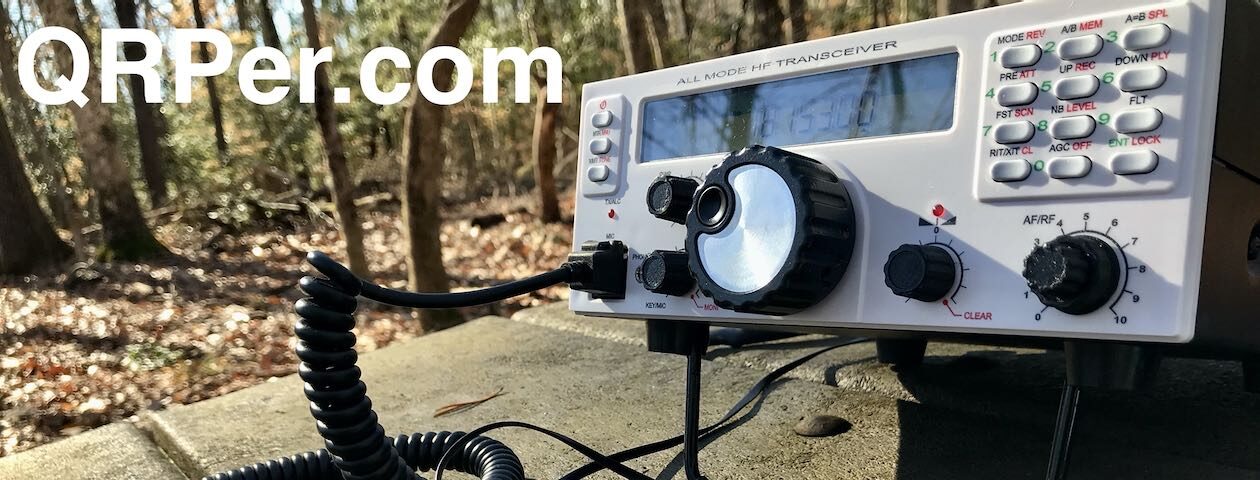Many thanks to Rod (VA3MZD) who shares the following guest post:
POTA by Bicycle: A Ham Radio Journey
By Rod Murray VA3MZD
First, some background: I earned my Canadian Basic With Honours Amateur Radio License in February of 2022 as a retirement goal while taking advantage of pandemic isolation time to read and study for the exam. I then chose VA3MZD as my call sign. Back in 2007, while teaching in Australia, my students gave me the Aussie nickname, Mr Muzzdog, and it stuck. I’m now Victor Alpha Three Mike Zulu Delta.
At about the time I got licensed, I acquired a Yaesu FT-818ND QRP radio. I had read and heard a lot about POTA and was eager to get on the air but also to operate outdoors. Being active in hiking, cycling and paddling, my immediate goal was to activate a local park on one of my outdoor adventures. I learned as much as I could about QRP and POTA from subscribing to Thomas’ QRPer Blog as well as numerous other channels. I was thrilled when I made my first HF QSO followed shortly thereafter with my first POTA contact as a Hunter from my QTH. This made me even more intent on activating a Park.
My activation attempts from a local park, however, were unsuccessful. QRP with a compromised, mini loop antenna wasn’t working for me. My first successful activation was unique and did not occur until a few months later, far from home.
In May 2022 I traveled to Vancouver, BC to visit family. One of the regulars on my radio club’s morning net (The Elmira Radio Club), a long distance Elmer, so to speak, offered to take me to a local British Columbia park and help me make my first activation. Despite having never met, Trevor VE7BM, scheduled a rendezvous east of Vancouver at VE-3304, Castle Park, and in half an hour, we had over 10 QSOs in the log. I was hooked!

Upon returning to my home province of Ontario, I acquired an EFRW antenna that I eventually tested for the first time on Field Day in June of 2022. The Nelson 9:1 worked well with my FT-818 and I began taking it on visits to my local Conservation Parks and on hiking trips. I made several successful activations with it but I then ordered a much more portable Tufteln QRP EFRW that Thomas had demonstrated on his QRPer channel. It performed very well and became my regular POTA antenna after installing the Nelson 9:1 permanently in the attic.
Having four POTA units close to home, all within 10 km, made it very convenient to make trips by vehicle to activate them. What makes those 4 parks even more interesting from an outdoor activity perspective is that they are linked by a well maintained rail trail, The Elora-Cataract Trailway which just happens to be part of VE-5082, The Great Trail of Canada! The rail trail connection means that all of these parks can be easily accessed on foot or, my preference, by bicycle.

I started taking my pared down kit, the radio, antenna, tuner, battery and throw line in my bicycle pannier on my regular rides. Then I’d set up the radio for a POTA Activation while visiting a park. My most frequented and my most favourite is VE-5319, Belwood Lake Conservation Area, because of the 10 km eastbound ride through farms and forests, over Shands Dam into the park. Not only is it a pleasant ride, it’s a 2-fer with The Great Trail!

In the westbound direction, The Trailway ends in the scenic and historic tourist town of Elora, and just beyond the town is The Elora Gorge Conservation Area, VE-1392, where the Canadian Heritage designated Grand River cuts a 22 metre chasm through the limestone bedrock.
It has serviced campsites, trails, picnic shelters and tables near mature White Pine trees (Ontario’s Provincial Tree) perfect for deploying a wire antenna. I’ve been fortunate to have met each of these Parks’ Superintendents, and have been able to promote Amateur Radio, my radio club, and also received their full support for POTA activations and Winter Field Day.

Between the two historic mill towns of Fergus and Elora that make up the municipality of Centre Wellington and accessible from The Trailway, stands The Wellington County House of Industry and Refuge National Historic Site, VE-5928. Now renovated to serve as the Wellington County Museum and Archives, the historic limestone building has an interesting, well documented history. Continue reading POTA by Bicycle: VA3MZD’s QRP Ham Radio Journey








































